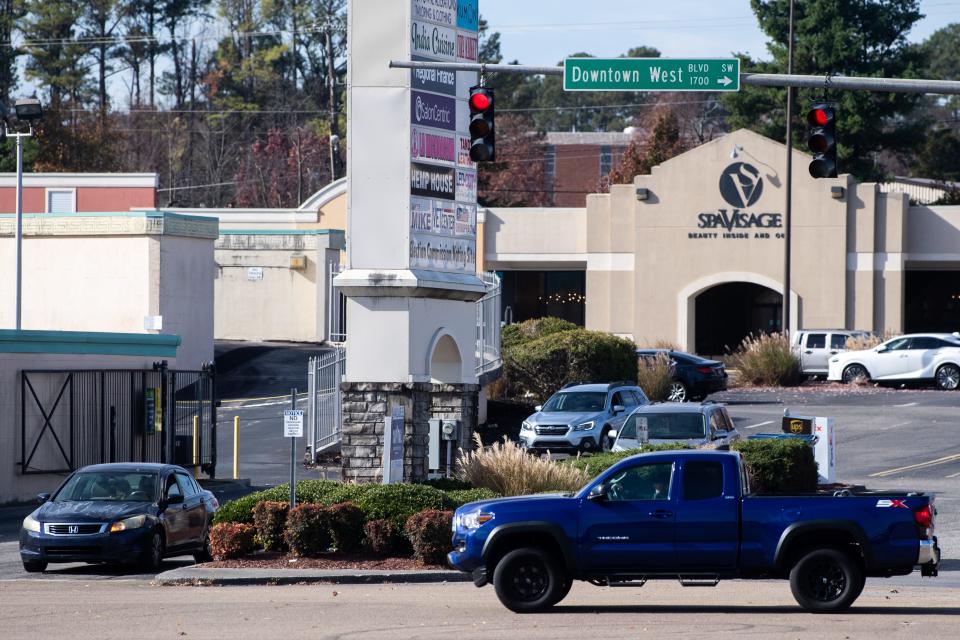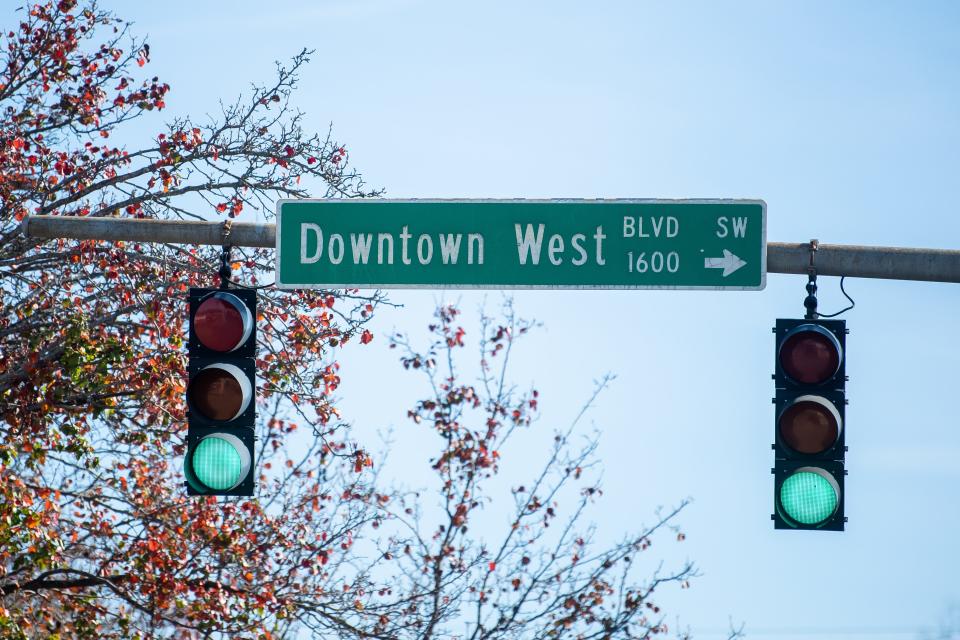Why is Downtown West called that when it isn't downtown? I Know Your Knox
In a puzzling twist, a street far from Knoxville's city center bears the name "Downtown West Boulevard." The curious choice leaves many wondering why this thoroughfare boasts a moniker that seems misplaced when it's nowhere near downtown Knoxville.
The street that intersects Kingston Pike just past West Town Mall is actually several miles from what's known as downtown. The name Downtown West is the remnant of a concept that never came to fruition. It has a unique history that sheds light on the reasoning behind it. As it turns out, this unconventional naming choice can be traced back to the 1970s and some ambitious urban planning.
Jack Neely of the Knoxville History Project told Knox News the road's history was a partnership of several developers working with several architects.
"I actually remember when it was all coming about. It was mainly a way to market a mixed-use, slightly higher-density shopping center at a time when it appeared that everything was moving west," Neely said.
1970s saw a shift in Knoxville's urban landscape
In the early '70s, Knoxville witnessed significant shifts in its urban landscape after the city's urban removal projects, a comprehensive redevelopment initiative that primarily took place from the 1950s to the 1970s. It involved the clearance of blighted areas and the demolition of older buildings to make way for new infrastructure, including modern housing, commercial developments and highways. While the intent was to revitalize the city, urban removal efforts also led to the decimation of Black neighborhoods and the displacement of many residents, a controversial aspect of the city's redevelopment history, according to the Beck Cultural Exchange Center.
The construction of West Town Mall in 1972 altered the city's commercial geography, leading to concerns about traffic congestion and the need for urban planning solutions. In this context, the term "Downtown West" was coined by Joseph Prochaska, a professor at the University of Tennessee's Graduate School of Planning, in 1971, according to Neely.

"The concept envisioned Kingston Pike splitting into eastbound and westbound lanes with extensive sidewalk space and development in between, aiming to address the anticipated traffic issues caused by the mall's opening," he said.
Downtown West Boulevard was birthed in 1974
The Downtown West that we know today took shape in 1974, thanks to more conventional developers and a team of modernist architects known as Goodstein, Hahn, Shorr, and Binkley, who would later design Thompson-Boling Arena.
Their vision for Downtown West was to create a distinct space, different from the typical strip malls along Kingston Pike. They combined residences with stores and offices, all while ensuring ample free parking. At the time, the prevailing belief was that Knoxvillians had a strong love for their cars and would expect convenient parking at stores and restaurants.
How well do you Know Your Knox? We answer the questions you really want to know
Average daily traffic and business still thriving
While the area isn't exactly what most would envision a downtown looking like, it's definitely not devoid of bustling businesses and traffic. It never has been.
Locals who recall the 1970s might remember spots such as Ponderosa Steakhouse, Swensen's Ice Cream Parlor, Gatti's Pizza Parlor and Cinema Six Theatre.
Popular spots today such as Pelanchos Mexican Grill, the Latino Chamber of Commerce, Spa Visage, numerous ethnic markets and businesses and the Downtown West Shopping Center all are located in the Downtown West Boulevard corridor.
Average daily traffic volume on Downtown West has experienced a slight decline in recent years, according to TDOT traffic data. For 2022, the average daily traffic count stood at 7,977. In 2021, it was slightly higher at 8,208.
Downtown West came at a time when the real downtown was in decline
In the 1970s, Knoxville's downtown still had a lot to offer, but it seemed to be in decline as businesses and residents were leaving for the suburbs. Some developers contemplated demolishing more downtown buildings to create additional parking space. Simultaneously, urban planners were exploring the idea of bringing suburban concepts to downtown Knoxville with a project called the East-West Mall. While some historic buildings along Church Avenue were razed for this initiative, ultimately it was never realized.

Downtown West the development preceded the boulevard, which was constructed to serve its needs. The original developers sold the project within its first decade, and it did not fully materialize as the car-friendly alternative to downtown that was initially envisioned. Creating the vibrant atmosphere of downtown with a surplus of surface parking turned out to be a challenging feat.
In retrospect, the name "Downtown West Boulevard" represents the era's urban aspirations and innovative ideas, even if the physical location does not align with the traditional definition of downtown. The history of this nomenclature provides insight into the evolving urban landscape and the city's attempts to adapt to changing times.
Know Your Knox answers your burning questions about life in Knoxville. Want your question answered? Email knowyourknox@knoxnews.com.
Angela Dennis is the Knox News race, justice and equity reporter. Email angela.dennis@knoxnews.com. Twitter @AngeladWrites. Instagram @angeladenniswrites. Facebook at Angela Dennis Journalist.
Support strong local journalism by subscribing at knoxnews.com/subscribe.
This article originally appeared on Knoxville News Sentinel: How Downtown West got that name when it's not in downtown Knoxville

